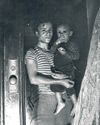CATEGORIES
Kategorien
Neueste Geschichten

Netanyahu Sets Deadline to Free Hostages
New Israeli demand for Saturday release follows ultimatum issued by Trump

Chain Automates as Wages Rise
Dave's Hot Chicken adds automatic dishwashers, selfordering kiosks

After The Fall
On Dec. 26, 2022, in Rome with his partner, Isabella, the British novelist and screenwriter Hanif Kureishi had a fall. One moment he was sitting at a table feeling dizzy, the next he was lying immobile on the floor in a pool of blood, his neck contorted. He believed he was only a few breaths away from dying. But his life didn't flash before his eyes. Instead, his thoughts were fixed on the future-\"everything I was being robbed of, all the things I wanted to do.\"

Musk's Bid to Control OpenAI Steps Up Pressure on Altman
Elon Musk's offer for the assets of OpenAI could end up costing Sam Altman, whether he takes it or not.

The Unorthodox Bet That Made the Eagles Champions
Philadelphia used its top two draft picks on prospects who played the exact same position. It turned out to be a masterstroke.

Chinese Film Smashes 'Star Wars' Box Office Record
A Chinese movie about a boy who fights demons and gods alike has become the world's highest-grossing movie in any single market.

A Complex Web Of Intrigue in Estonia
‘A LITTLE HATRED just makes you stronger,” says the title victim of “Who Shot Otto Mueller?” And to judge by this eight-part whodunit— and its many relatives in Agatha Christie World—a lot of hatred just makes you dead. Did Otto (Jaan Rekkor) deserve a bullet in the head? Even his family can’t argue otherwise. The question in this snowballing mystery is who was pushed far enough, finally, to pull the trigger.

Vance Urges Light AI Hand
U.S. is at odds with dozens of countries pushing for common regulatory principles

Boomers Set to Revive Senior-Housing Market
Senior housing has been one of the biggest disappointments for commercial-real-estate investors. Now thanks to millions of aging baby boomers, that may be about to change.

Democrats Struggle to Find A Strategy to Counter Trump
Democratic governors used a private phone call with Senate Minority Leader Chuck Schumer to push him to be tougher on President Trump.

Hostage Accounts Raise Alarm About Survival Prospects
Three freed hostages said they were kept underground for more than a year.

Russians Free American Left Out of Prisoner Swap
Just minutes before President Trump escaped an assassin's bullet at a campaign rally in Butler, Pa., he held a brief backstage meeting with a 95year-old local woman whose son, Marc Fogel, had spent three years in a Russian jail.

Next, Defund the United Nations
The U.S. underwrites a variety of international organizations that make up a global deep state.

Connecticut Is Taking Off As a Popular Aviation Market
Upstarts are having success there, but travelers say some details still need to be worked out

The Unorthodox Bet That Made the Eagles Champions
Philadelphia used its top two draft picks on prospects who played the exact same position. It turned out to be a masterstroke.

SMIC Reports Lackluster Fourth Quarter
China’s largest chip maker said profit fell but it expected revenue growth

Jordan's King Dodges Trump On Gaza Plans
Abdullah sidesteps confrontation but says he still opposes moving Palestinians

Here Is Where Phillips 66 and Elliott Don't See Eye to Eye
Activist Elliott Investment Management had a clear road map for refining giant Phillips 66 when it took its first $1 billion stake in the company in late 2023.

Sobering Truth About What You Drink
Pick your poison: For each pairing, guess which one contains more alcohol

The Magnificent 7 Are So Last Year
A twist on value spotlights the beauty of companies returning gobs of cash to shareholders

The Lakers Are Already Winning Doncic Trade After One Game
WHEN THE DALLAS Mavericks traded Luka Doncic to the Los Angeles Lakers just over a week ago, the move sent shock waves through the world of sports. Rival teams wondered whether the Lakers had just been gifted a new chapter of domand what in the inance world the Mavericks were thinking.

Musk Defends Cuts, Calling Federal Workers 'Unelected'
Elon Musk cost-cutting defended his plans as a campaign to curb federal spending amid opposition from Democrats and legal challenges that have stalled some of his efforts.

New Aunt Wants to Contribute to Baby's Future
I've recently taken on an exciting new title: Auntie Julia.

President's Policies Sow Uncertainty In U.S. Economy
It usually takes years for a president to leave his mark on the economy. Donald Trump has done it in just a few weeks. His plan to raise tariffs on Canada, Mexico and China has rattled markets and boardrooms.

Hypnotic Guitar Rock
The indie band Horsegirl returns with an accomplished second album

Fires Forced Tough Choices on Car Capital
Hunt Turner and his wife rushed out the door of their Altadena, Calif., home as their phones blared evacuation messages, warning of encroaching wildfires. Turner reached into his pocket for an old metal car key.

BP to Reset Strategy Amid Activist Push
CEO is expected to abandon low-carbon strategy in favor of core oil, gas assets

Oil Industry's Ugly Divorce: Chevron Ditches California
After pumping oil in the Golden State since 1876, goodwill has gone dry

Musk Deputy Leads Aid-Cut Effort
The prominence of Davis at DOGE surprised few who have dealt with Musk.

ART REVIEW: Calamity on Camera
A show celebrates photographer Usher Fellig, better known as Weegee
